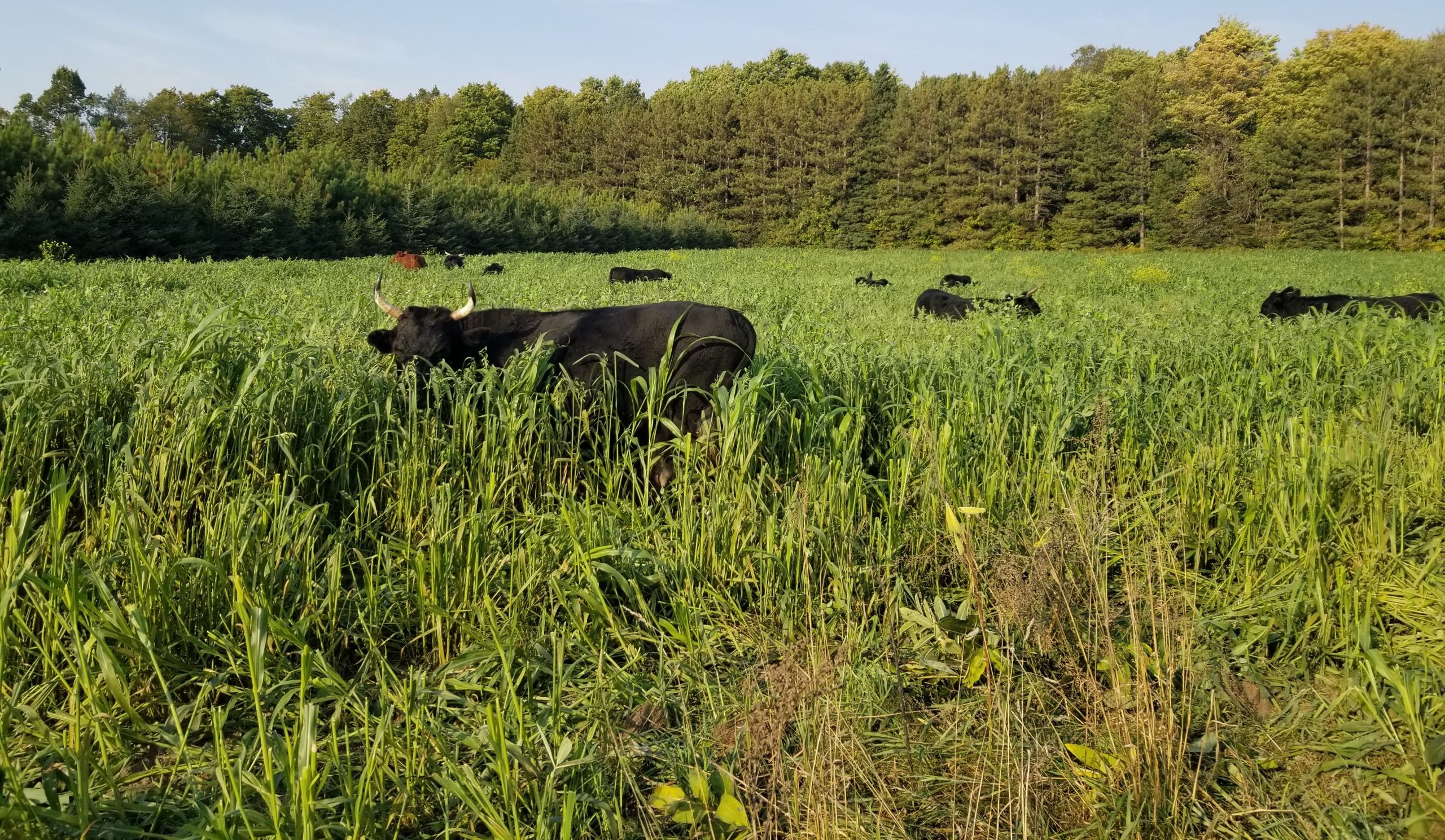The Cows Have Come Home: Winter Reflections on Cattle Grazing and Wildlife
As the cold season settled in, the cows at Whole Village returned to the barn where they are well- cozy, sheltering from winter winds. Though the cattle spend more time in the barn during the winter they often enjoy romping in the snow when the days are sunny – anticipating the fresh grass of spring. Our rotational grazing system has laid the foundation for a thriving, biodiverse
ecosystem—showcasing how working landscapes benefit both wildlife and farmers.
Wildlife Habitat on Working Landscapes
During the growing season, Ben rotates the herd through paddocks—carefully managing grazing in small areas. This allows time for re-growth, spreads fertilizer more evenly, and creates conditions for more productive grasslands—both for the cows and for the other inhabitants of our pastures. Rotational grazing creates valuable habitat for wildlife. The shifting structure of the grassland—some areas grazed short, others left taller—supports diverse species, from birds to small mammals and insects. Ground-nesting birds like meadowlarks, find safe nesting areas among the tall grasses left undisturbed between grazing periods while small mammals and beneficial insects thrive in the patchwork of varying vegetation and food sources. The concept of working landscapes highlights the balance between productive agriculture and environmental stewardship. While the Whole Village herd plays a central role in this grazing system, the benefits extend far beyond the cattle, supporting a broad range of species and contributing to a healthy,functioning ecosystem.
Benefits for Native Bees
Well-managed grazing systems can support native pollinators significantly, particularly ground-nesting bees. New research from Montana State University demonstrates that grazed pastures can offer up to three times more nesting sites compared to un-grazed areas. This is because grazing exposes small patches of soil, shortens grasses, and reduces plant litter—creating ideal conditions for ground-nesting. At Whole Village the rotational grazing system strikes a balance between short and tall vegetation, ensuring most soil remains covered, which is a key principle of sustainable grazing. However, some areas of soil naturally become exposed as debris is cleared, providing excellent nesting opportunities for these special bees. During the recovery periods between grazing, wildflowers flourish, supplying essential food sources for pollinators throughout the growing season. Boosting pollinator populations not only benefits wildlife but also enhances pollination and biodiversity on the farm—increasing resilience—a win-win for both the ecosystem and the farm.
Biodiversity Underground
The benefits of rotational grazing extend deep into the soil where a rich diversity of organisms,
particularly beneficial insects, thrive. As cattle move across the land they deposit manure and trample plant material adding organic matter to the soil. This organic matter feeds soil-dwelling insects like beetles, ants and earthworms which are essential for nutrient cycling and building healthy soil. These insects, in concert with a wide range of microorganisms, accelerate nutrient cycling in the soil, break down the organic material—enriching the soil and creating a thriving environment for plant growth. By promoting a rich network of soil life, rotational grazing helps improve water retention and nutrient availability benefiting both the farm and the broader ecosystem.
 Rest and Renewal
Rest and Renewal
As the snow blankets the trees and fields of our farm, the land lies quietly awaiting the warmth and renewal of the brighter days ahead. The winter months call us to rest and recover to build strength for the coming season. When the herd returns to pasture in the spring, the dynamic dance of growth and grazing will begin again. This ongoing balance between agriculture and conservation sustains the farm and farmer, the well-being of the community and the thriving ecosystem here at Whole Village.


